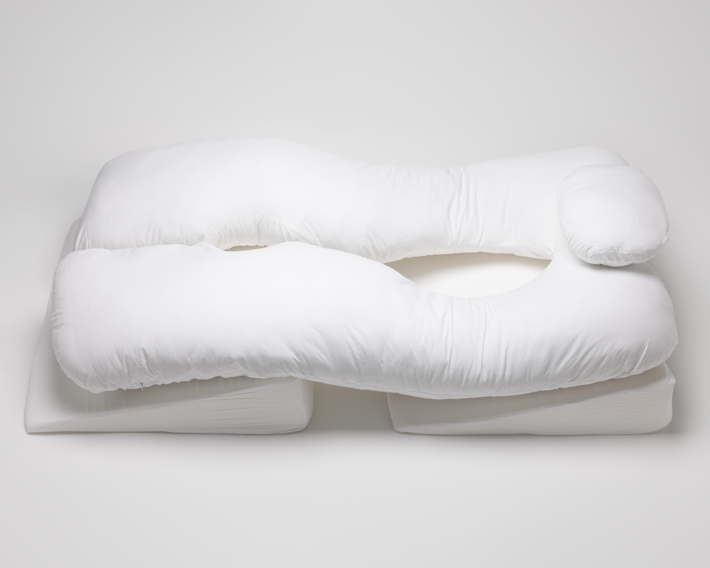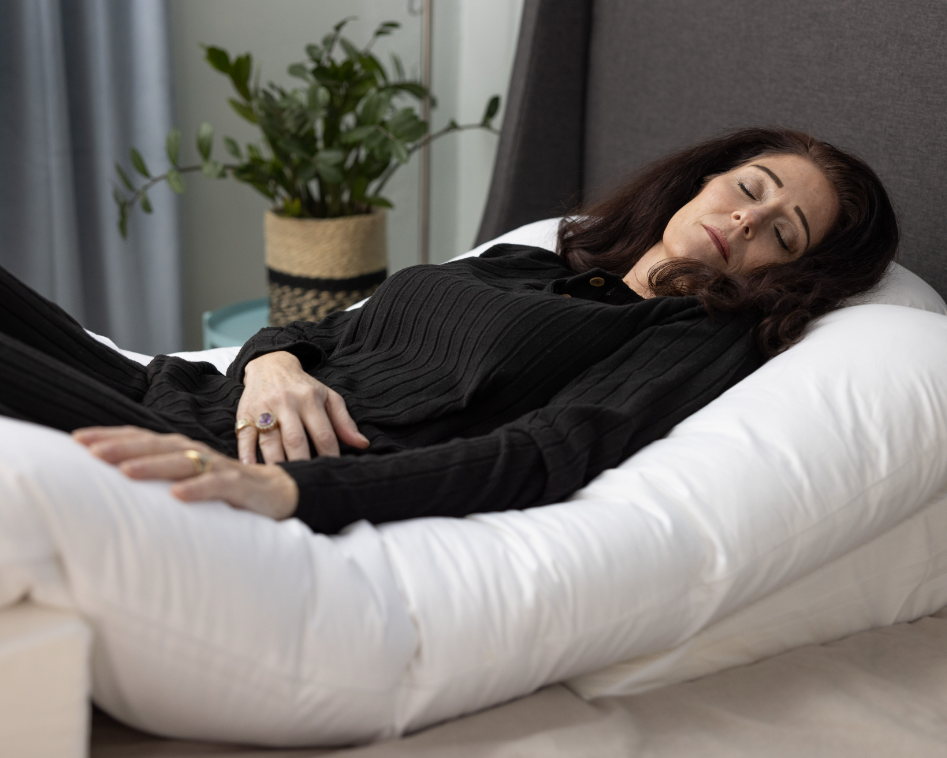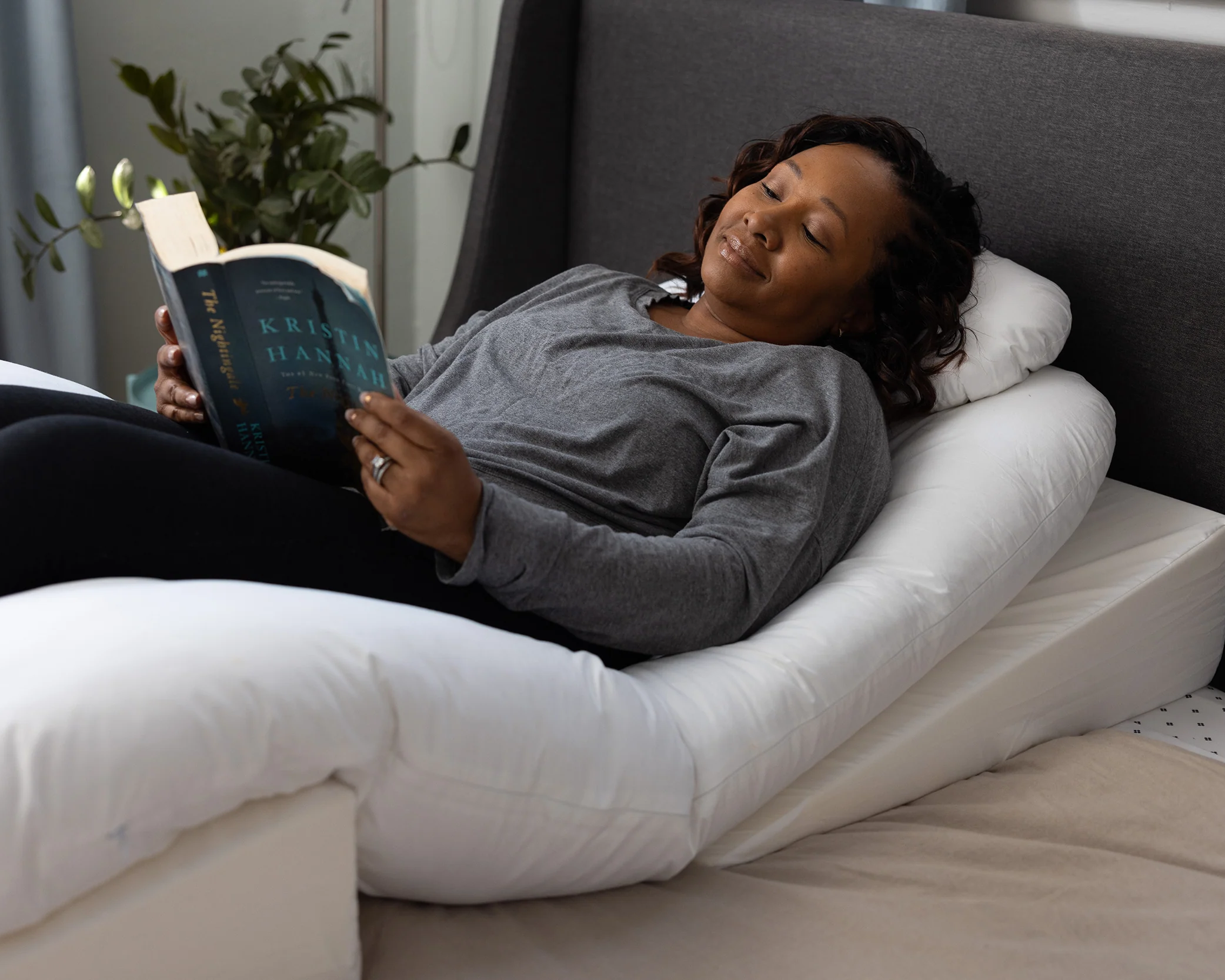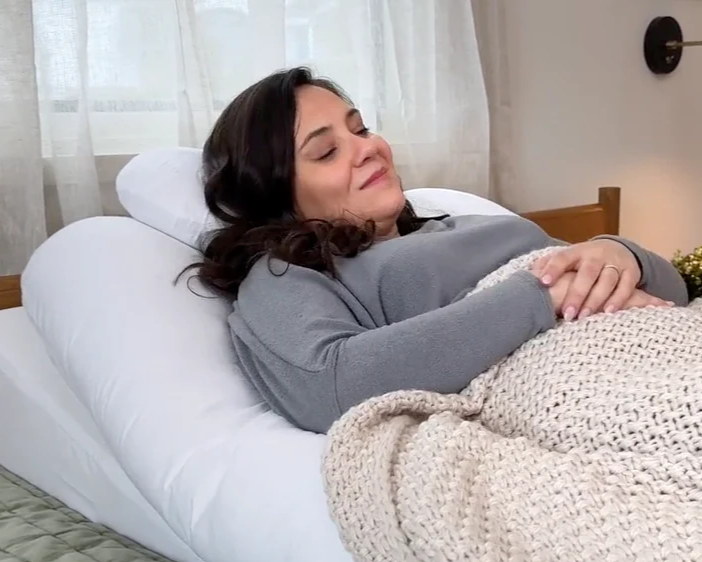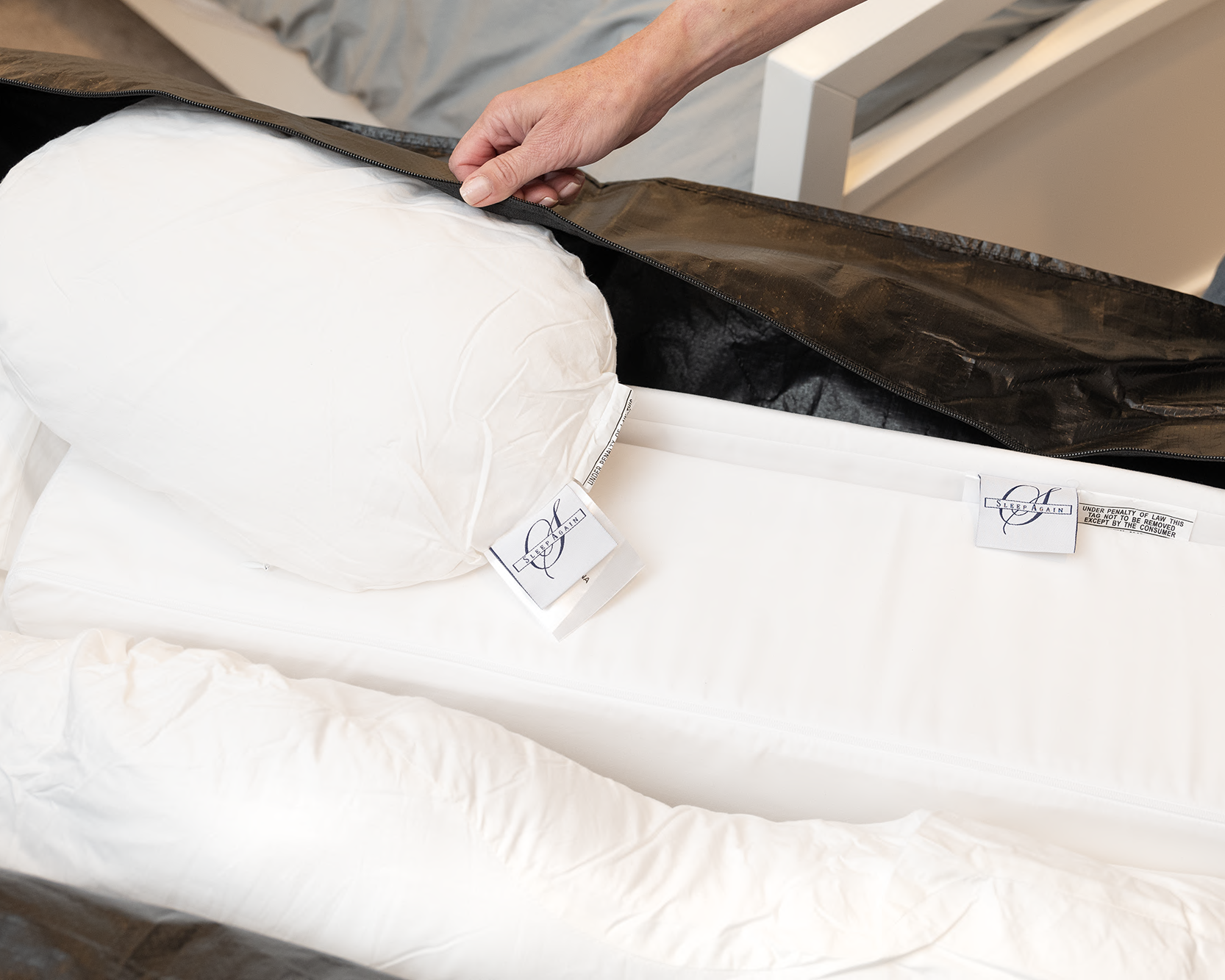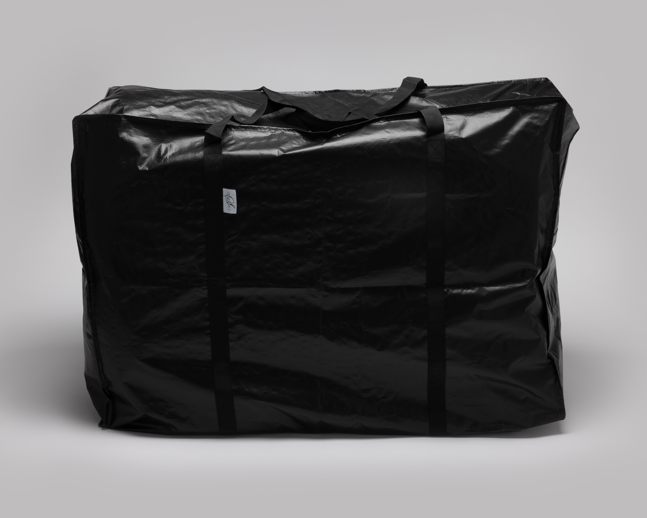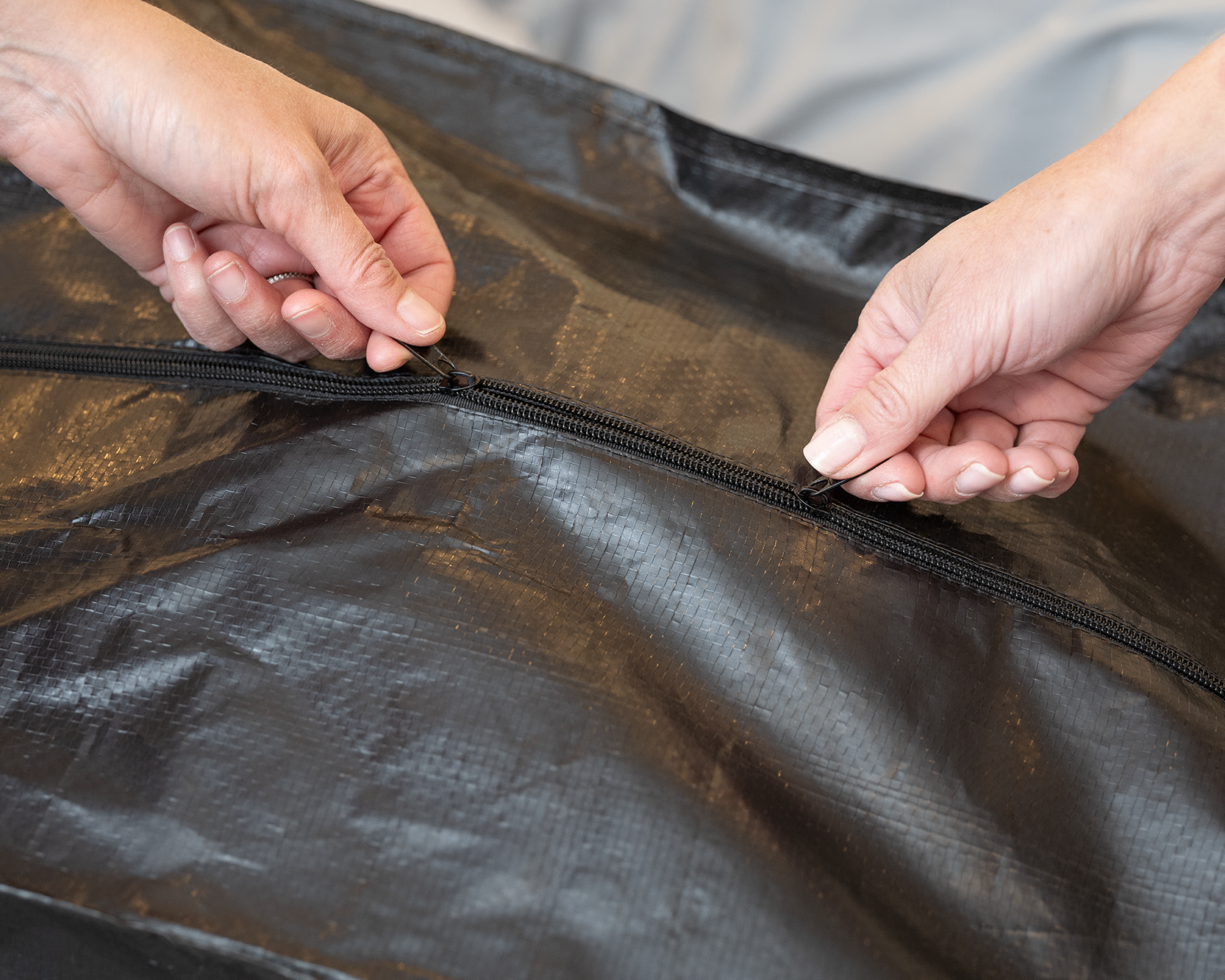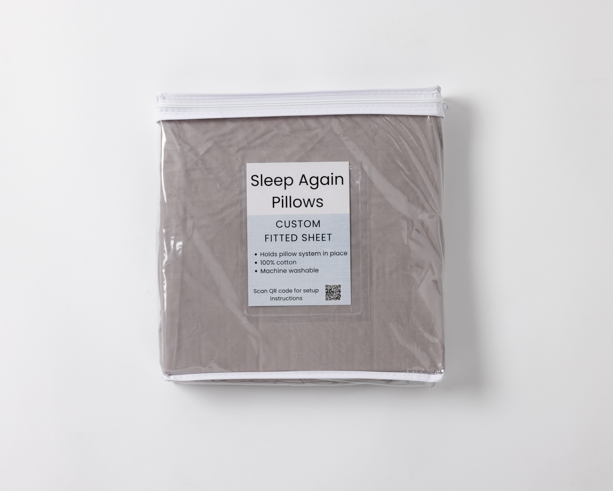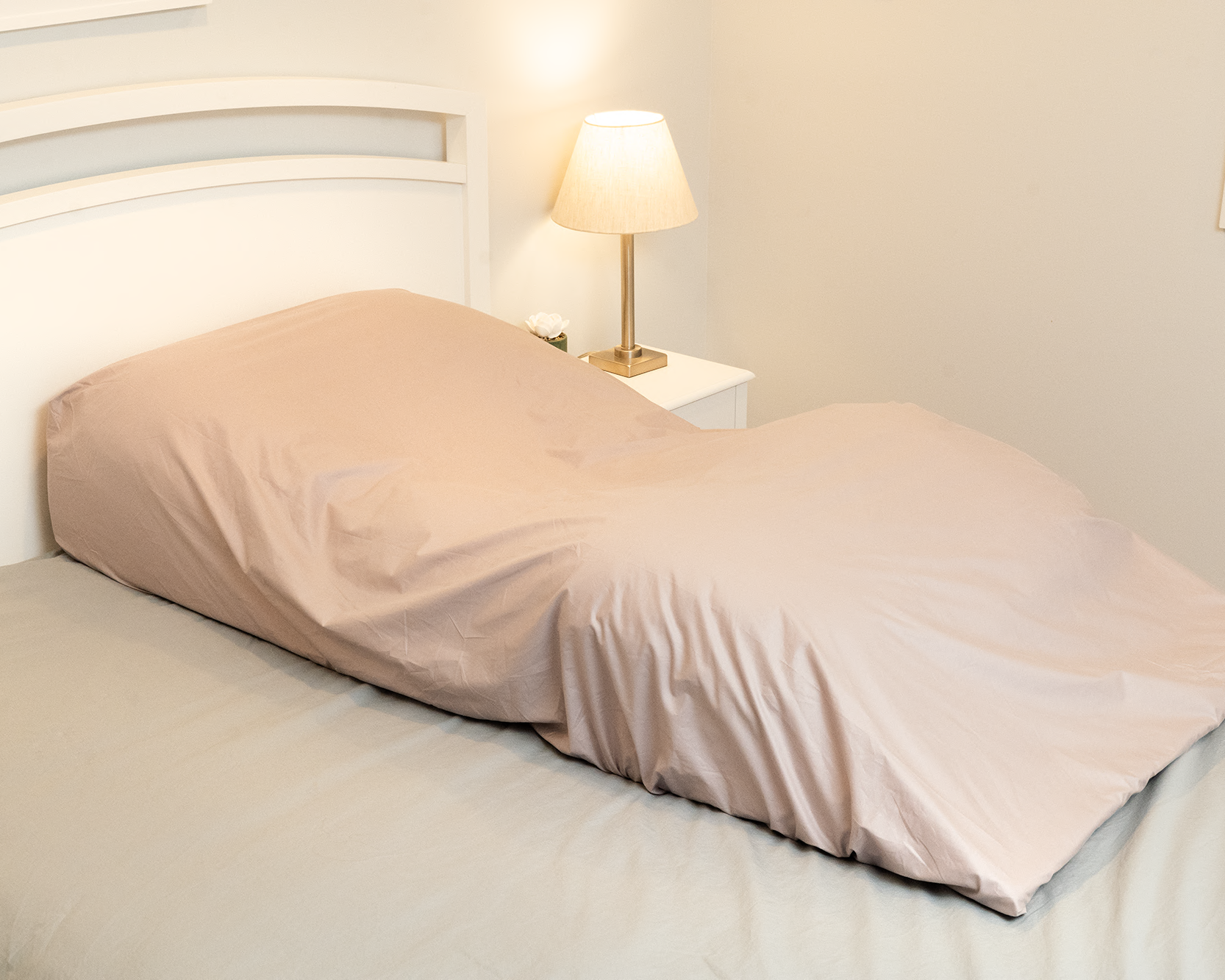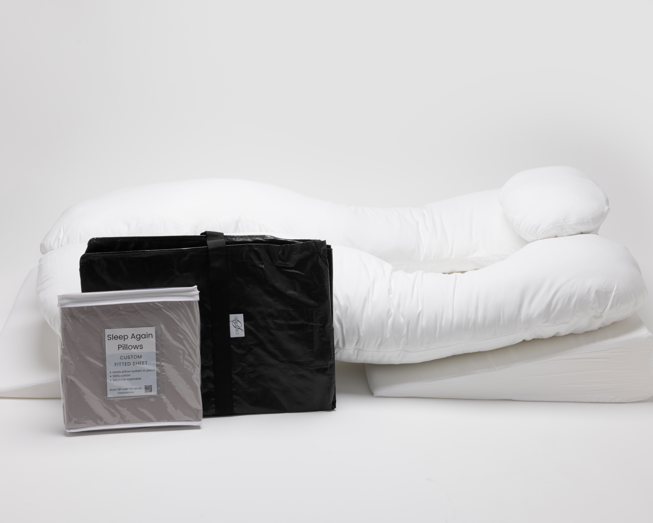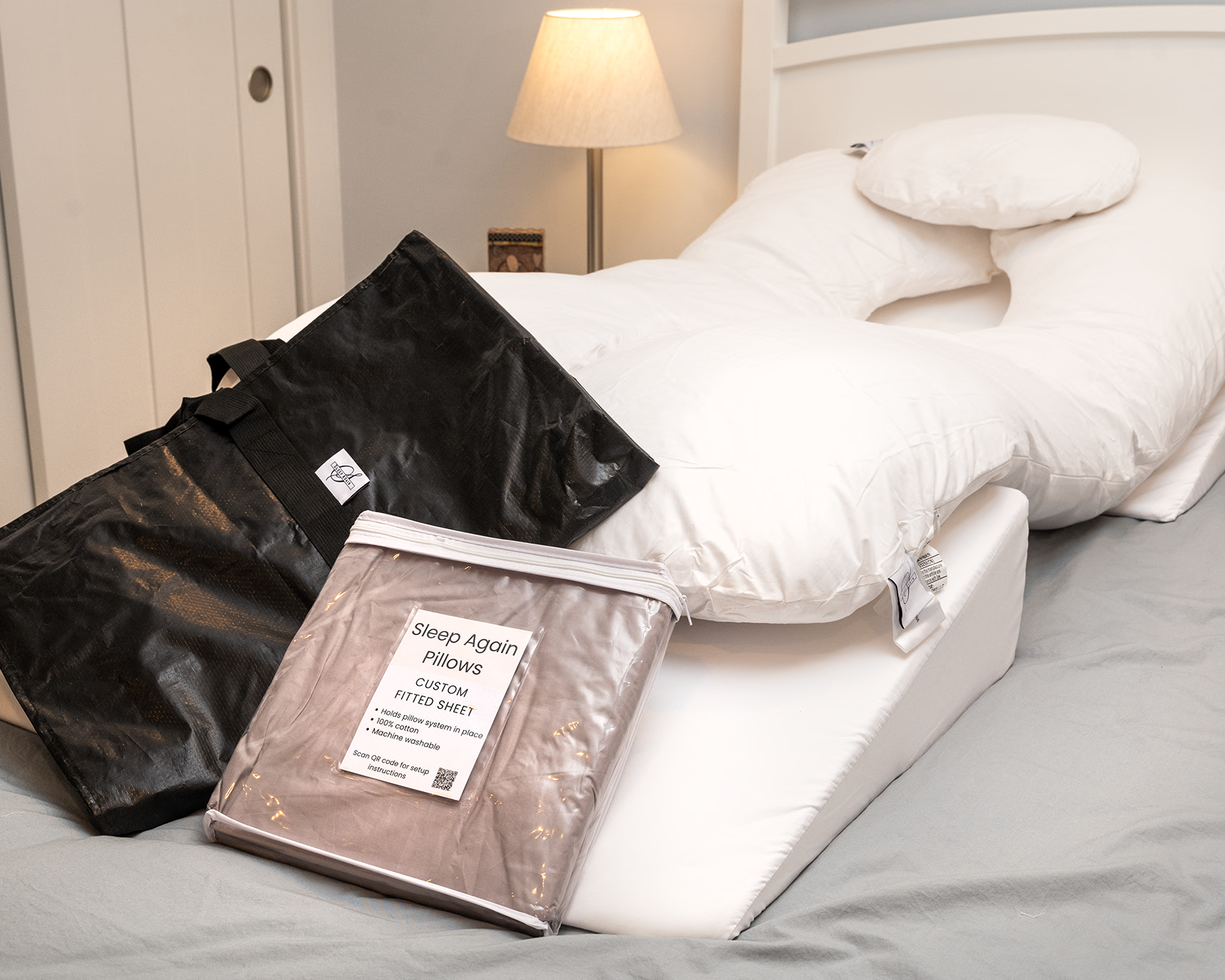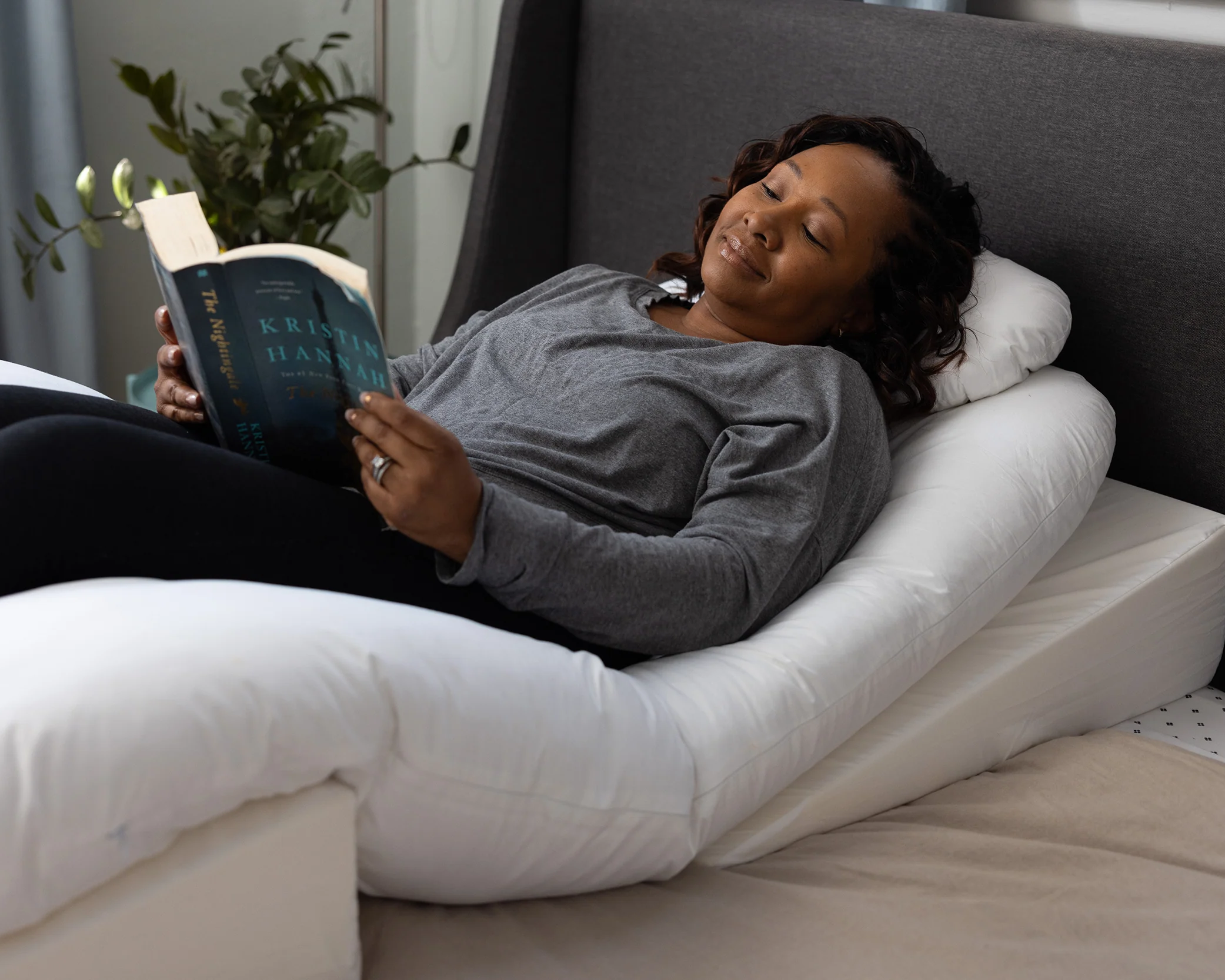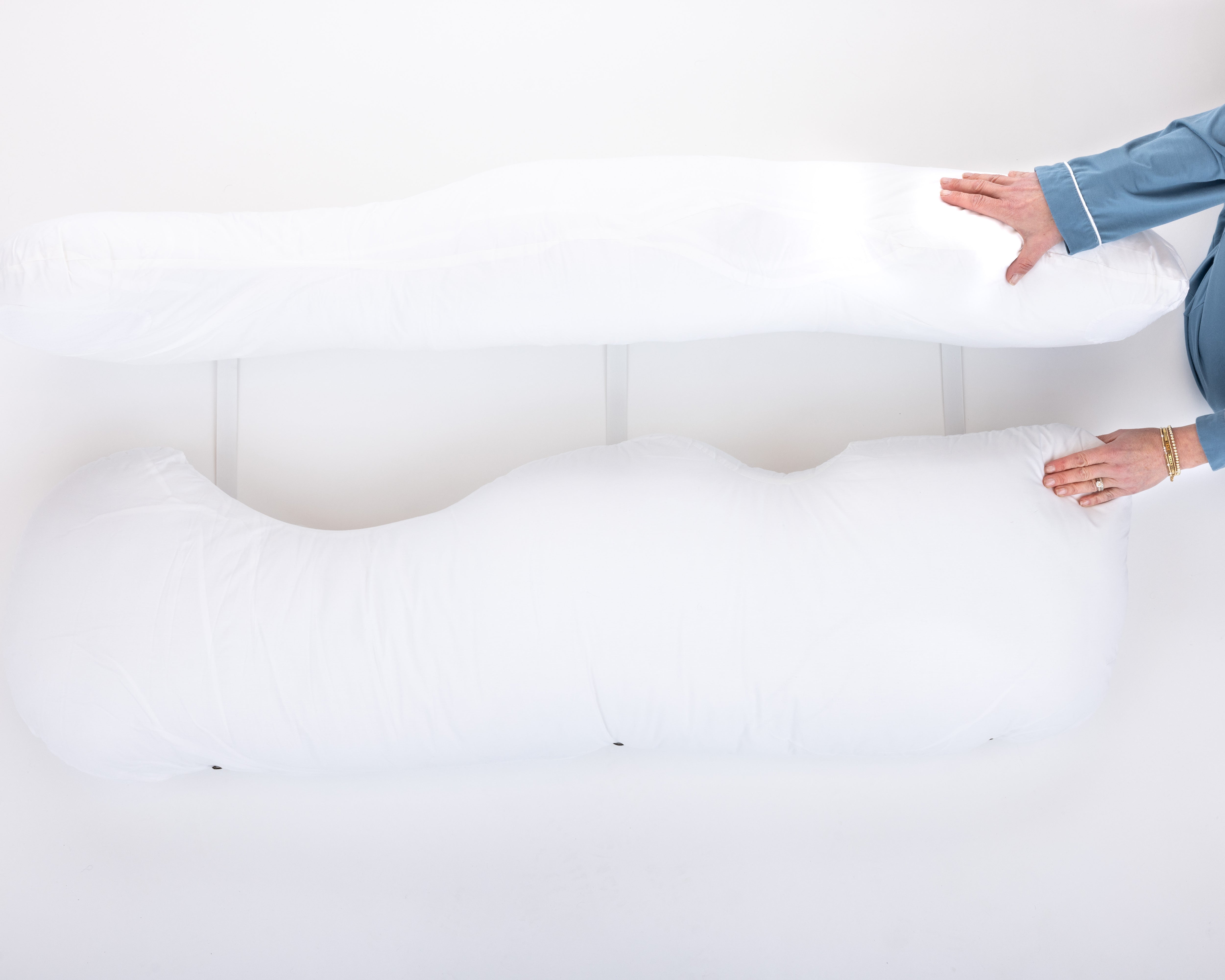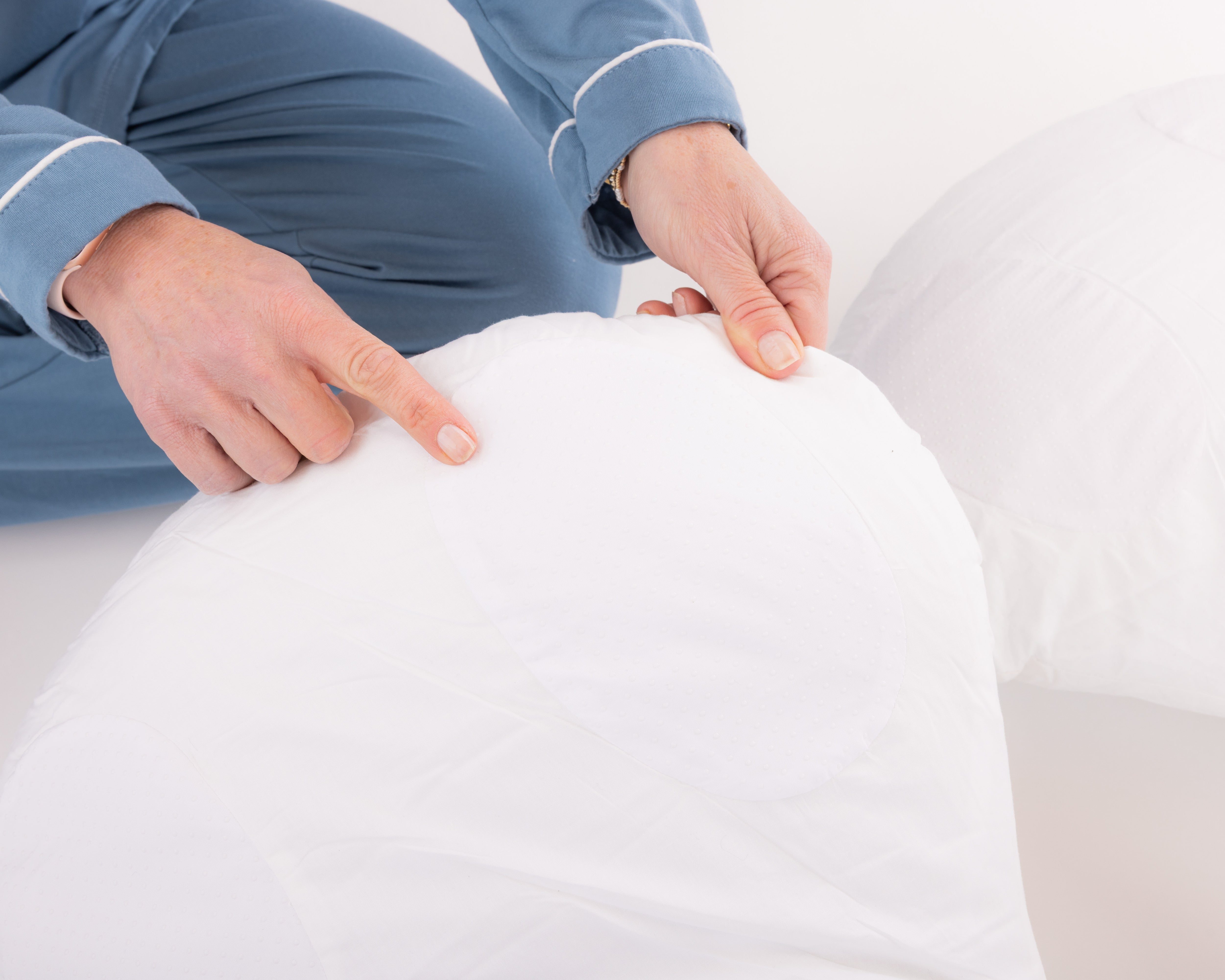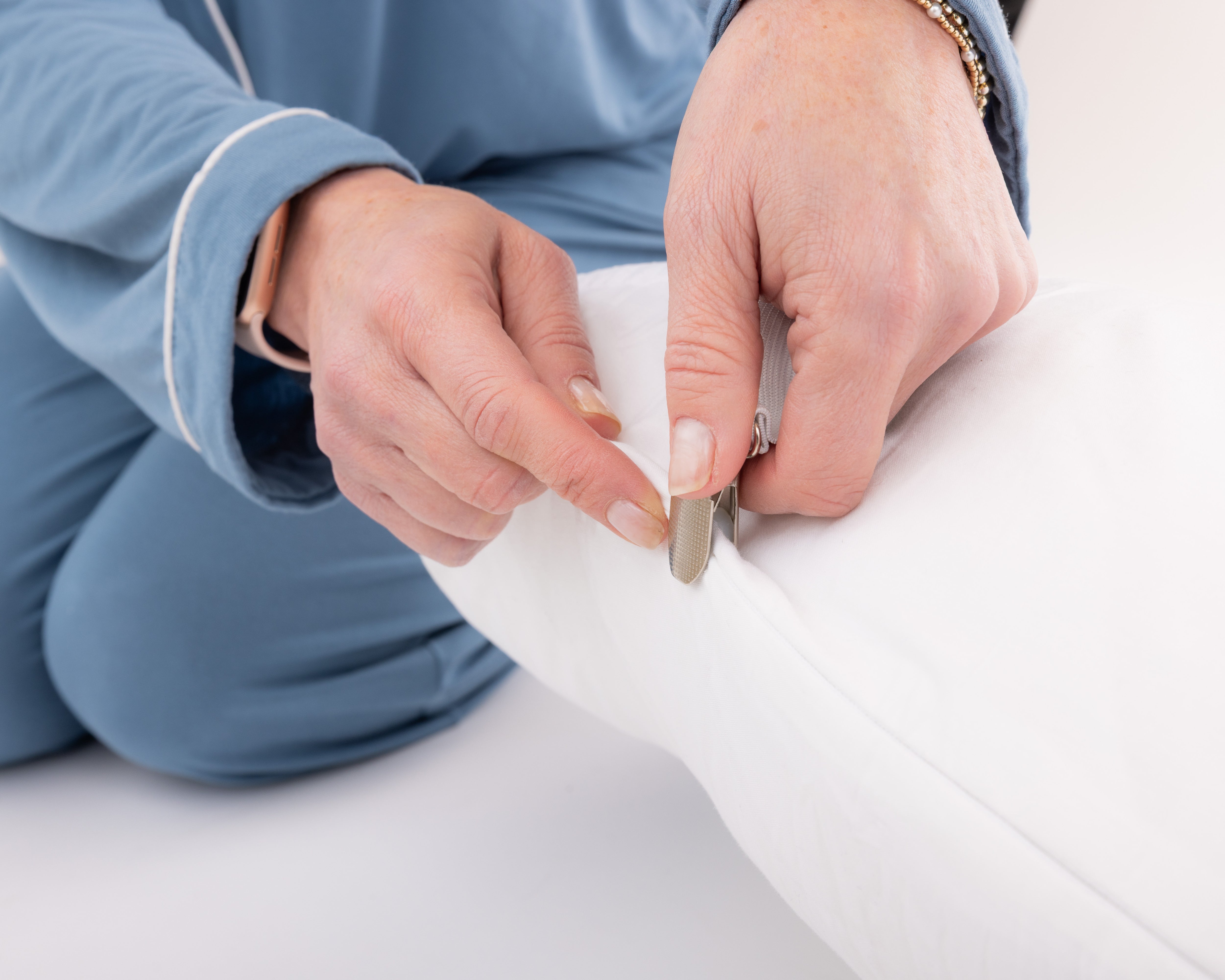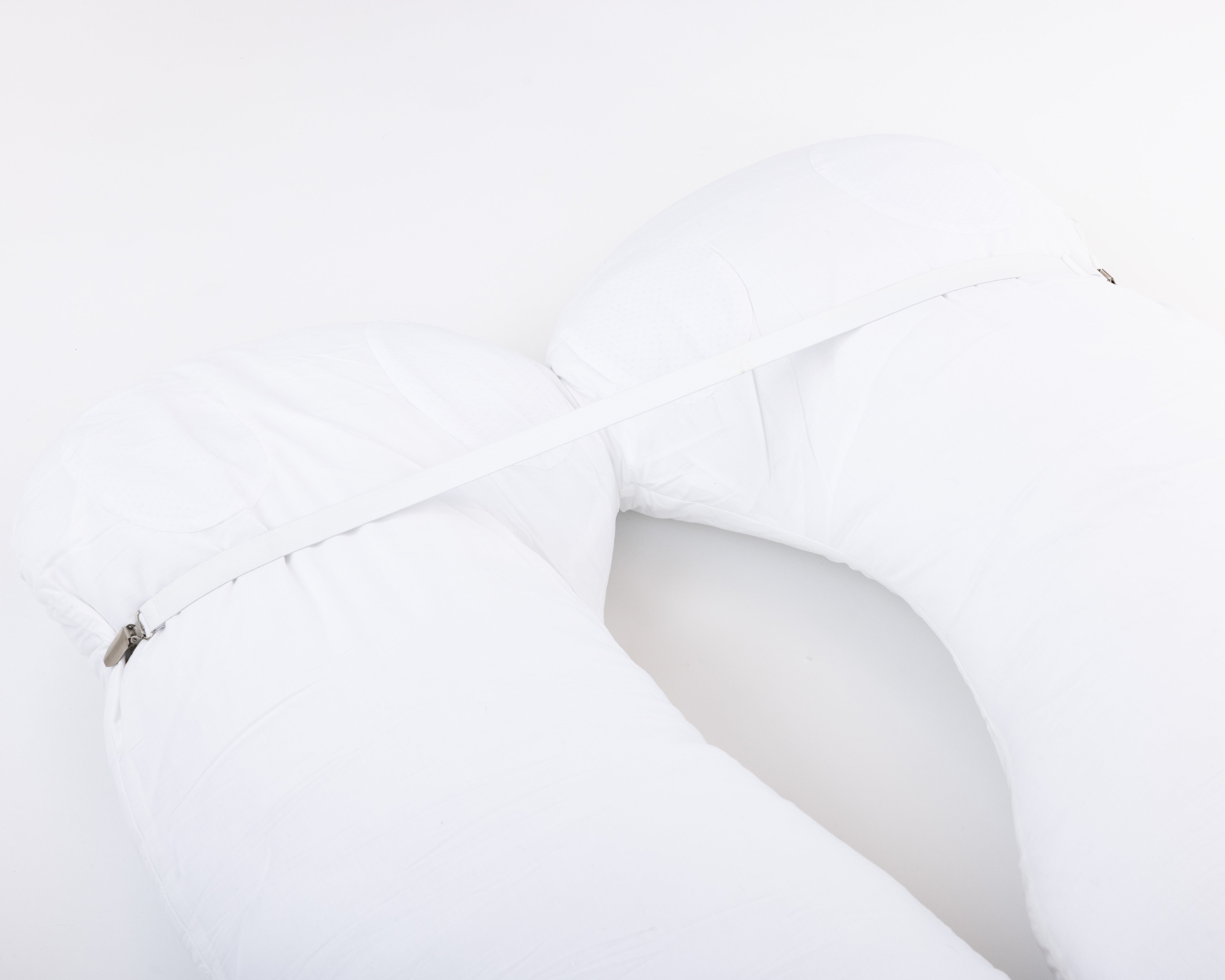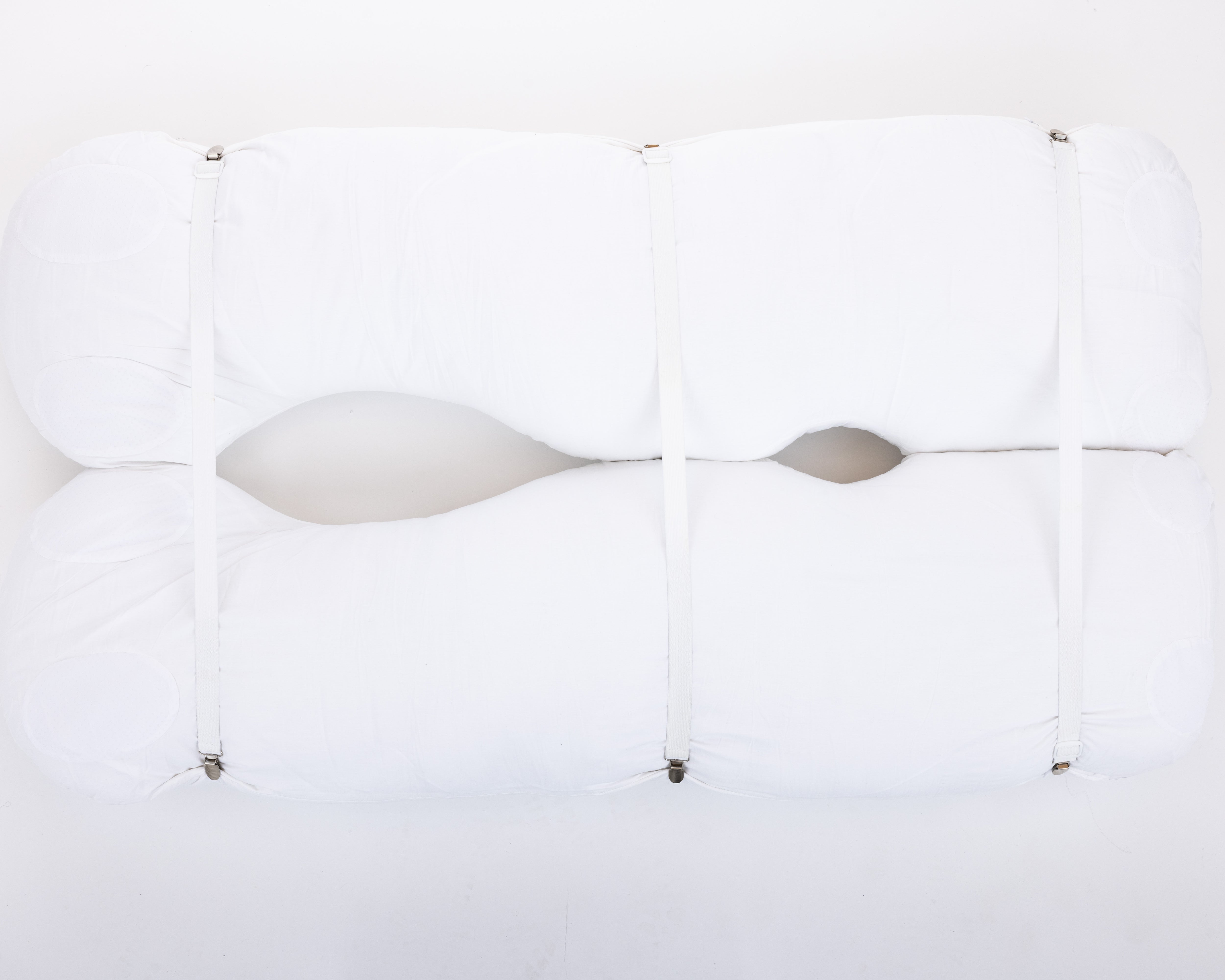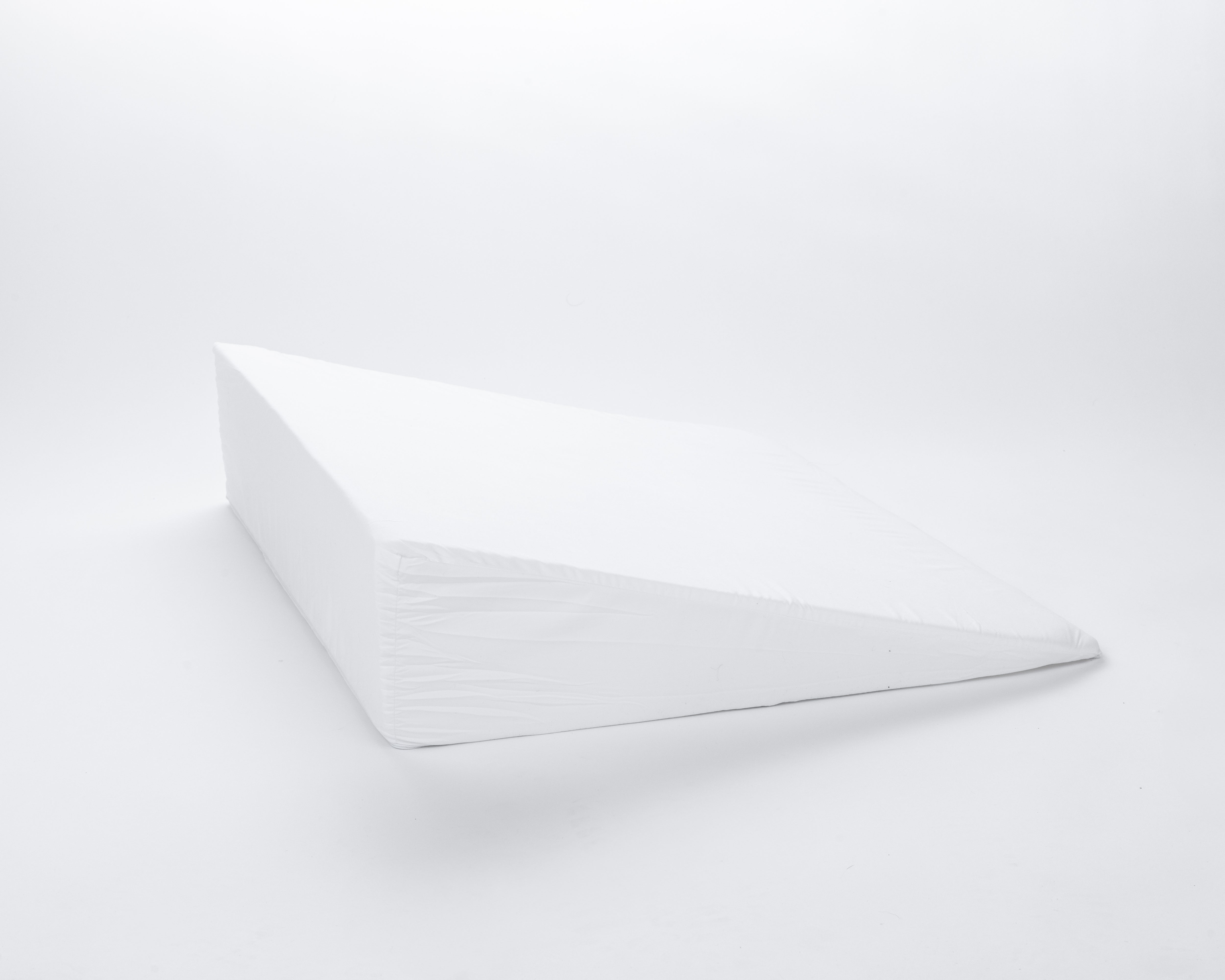If you've been struggling to find comfortable sleep with thoracic outlet syndrome, you're not alone. Many people with TOS find that nighttime can be particularly challenging, as lying down often puts pressure on the very areas that are already sensitive.
You might recognize this scenario: you're settling in for the night when that familiar tingling starts, or you wake up with arms that feel heavy and unresponsive. Finding a comfortable position can feel like solving a complex puzzle, and the lack of quality sleep only adds to the daily challenges you're already managing.
Thoracic outlet syndrome affects the delicate space where nerves and blood vessels pass between your collarbone and first rib. When you're lying down, certain positions can compress this area, leading to the numbness, tingling, or discomfort that interrupts your rest. What makes this particularly difficult is that sleep—something your body needs for healing and recovery—becomes elusive just when you need it most.
The encouraging news is that TOS-related sleep difficulties can be significantly improved. With thoughtful adjustments to your sleeping position, the right support, and some modifications to your sleep environment, it's possible to find comfort and wake up feeling refreshed rather than stiff and tired.
You don't have to settle for restless nights. By understanding how different positions affect your symptoms and making strategic changes, you can work with your body rather than against it to achieve the restorative sleep you deserve.
What Is Thoracic Outlet Syndrome and Why Does It Hate Your Sleep?
Thoracic outlet syndrome occurs when the blood vessels or nerves in the space between your collarbone and first rib get compressed. Think of it as a traffic jam in one of your body's busiest intersections—everything backs up, creating symptoms that range from annoying to "please make this stop."
This crowded anatomical real estate includes major nerves that control sensation and function in your arms and hands, plus blood vessels that keep everything properly supplied with oxygen and nutrients. When these structures get squeezed, you experience the delightful combination of numbness, tingling, pain, and weakness that makes TOS such a joy to live with.
Why sleep becomes mission impossible:
Gravity becomes the problem: When you lie down, the natural settling of your shoulder and arm position can worsen the compression that's already causing problems during the day.
Sleep positions compress the thoracic outlet: Most natural sleep positions—side sleeping with your arm under your pillow, stomach sleeping with your arm overhead, even certain back sleeping positions—can narrow the space where your nerves and blood vessels are already fighting for room.
Unconscious positioning: Your sleeping brain doesn't know about your TOS diagnosis. It will happily settle into positions that pinch nerves and compress blood vessels, leading to wake-ups that feel like your arm has been borrowed by someone else for several hours.
The 5 Biggest Thoracic Outlet Syndrome Sleep Problems (And How to Actually Solve Them)
Problem #1: "My Arms Go Completely Numb During Sleep"
Why this happens: Your current sleep position is compressing the nerves or blood vessels in your thoracic outlet, cutting off sensation and circulation to your arms and hands.
The Solution: The Modified Back Sleep Setup
Back sleeping with strategic elevation and support eliminates most of the compression positions that cause TOS symptoms.
What you need:
-
Upper body elevation at 15-30 degrees
-
Arm support that prevents hanging or internal rotation
-
Shoulder blade support to maintain proper positioning
Setup process:
-
Create gentle upper body incline using wedge pillow or stacked firm pillows
-
Position arms slightly away from your body, supported on pillows
-
Ensure shoulders are in neutral position, not rolled forward
-
Add support behind shoulder blades to prevent internal rotation
Why this works: Elevation reduces compression while neutral arm positioning keeps the thoracic outlet space as open as possible. Your arms stay supported without hanging in positions that narrow the outlet.
Problem #2: "I Can't Sleep on My Side Without Causing Symptoms"
Why this happens: Side sleeping naturally compresses the thoracic outlet on the side you're lying on, while the top arm often falls into positions that worsen compression.
The Solution: The Supported Side Sleep Strategy
If side sleeping is your preferred position, you can make it work with comprehensive support that maintains optimal thoracic outlet positioning.
For the bottom arm:
-
Never tuck your arm under your pillow or body
-
Position arm slightly in front of your body, supported on a pillow
-
Ensure your shoulder blade stays in neutral position
For the top arm:
-
Support with a pillow to prevent it from falling across your body
-
Maintain slight forward positioning to open the thoracic outlet
-
Use firm pillow support that doesn't compress during sleep
Key insight: The goal is maintaining the space in your thoracic outlet while providing complete support for both arms throughout the night.
Problem #3: "I Wake Up Every Hour to Reposition My Arms"
Why this happens: Your pillow arrangement loses its shape during sleep, leaving your arms unsupported in positions that cause TOS symptoms.
The Solution: Strategic Equipment Selection
The key is using positioning aids that maintain their support throughout the night rather than compressing and shifting like regular household pillows.
Setup stability requirements:
-
Test your pillow arrangement by pressing on it firmly before sleep
-
Use pillows with non-slip surfaces or add yoga mats underneath
-
Create a system where pillows support each other rather than working independently
-
Position everything before getting into bed to avoid disrupting the arrangement
Problem #4: "Every Sleep Position Seems to Make My TOS Worse"
Why this happens: You haven't found the sweet spot of positioning that keeps your thoracic outlet open while still being comfortable enough for sleep.
The Solution: The Process of Elimination Approach
Start with the TOS-friendly position hierarchy:
-
Best: Elevated back sleeping with supported arms
-
Good: Non-affected side sleeping with comprehensive support
-
Caution: Affected side sleeping (only with perfect positioning)
-
Avoid: Stomach sleeping, arms overhead, shoulders rolled forward
The positioning test:
-
Try each position for 30 minutes during the day first
-
Note any increase in numbness, tingling, or pain
-
Build your sleep setup around the position that passes the test
Problem #5: "My Partner's Sleep Gets Disrupted by All My Repositioning"
Why this happens: TOS sleep positioning often requires more space and equipment than standard sleep setups, affecting bed real estate and partner comfort.
The Solution: The Diplomatic Space Management Strategy
Communication strategies:
-
Explain that consistent positioning prevents multiple wake-ups that disrupt both partners
-
Share the goal of eliminating middle-of-night repositioning through better initial setup
-
Include partner in solution-finding rather than enduring the problem

The Complete Sleep Again Pillow System: Your TOS Solution
The challenges of TOS sleep positioning—maintaining precise angles, preventing pillow compression, ensuring bilateral arm support—require more than random household pillows can provide. The Sleep Again Pillow System was specifically engineered to address every positioning challenge discussed in this guide.
Every Sleep Again Pillow System includes:
-
Two Contoured Side Pillows to cradle back and hips
-
Upper Body Wedge to create optimal upper body incline
-
Leg Support Wedge to gently elevate legs
-
Head Pillow to provide head support and neck mobility
-
Removable, washable slipcovers for every piece
Why Sleep Again Pillows Excel for TOS Patients
Consistent thoracic outlet positioning: The system maintains the precise 15-30 degree elevation angles that optimize thoracic outlet space throughout the night. Unlike household pillows that compress and lose their therapeutic positioning, Sleep Again Pillows retain their shape and support when you need it most.
Bilateral arm support without gaps: The Contoured Side Pillows provide simultaneous support for both arms without the gaps and inconsistencies that develop with multiple individual pillows. This eliminates the middle-of-night repositioning that disrupts both your sleep and your partner's.
Elevation without neck strain: The Upper Body Wedge creates therapeutic elevation angles while the Head Pillow ensures comfortable neck positioning—crucial for TOS patients who need upper body elevation but can't tolerate neck discomfort.
Space-efficient design: The modular system provides comprehensive support using less bed space than equivalent DIY arrangements. This is particularly important for TOS patients whose positioning needs often affect partner sleep quality.
Professional-grade materials: Each component uses advanced supportive materials that maintain their therapeutic positioning throughout the night, eliminating the pillow-fluffing sessions that interrupt healing sleep cycles.
Sleep Again vs. DIY Pillow Solutions: The Real Cost Analysis
DIY Pillow Approach:
-
Initial cost: $150-250 for various pillows from different manufacturers
-
Setup time: 15-20 minutes nightly arranging and testing stability
-
Night maintenance: 2-4 wake-ups for pillow readjustment
-
Hidden costs: Trial-and-error purchases, replacement of compressed pillows
-
Partner impact: More bed space usage, frequent sleep disruption
Sleep Again Pillow System:
-
Complete system: $299 for integrated solution
-
Setup time: 3-5 minutes once familiar with configuration
-
Night maintenance: Maintains positioning throughout the night
-
Long-term value: Continues providing benefits for years beyond initial TOS management
-
Partner benefits: Less bed space invasion, elimination of middle-of-night disruptions
The cost-per-night reality: At $299 divided by 365 nights, the Sleep Again system costs less than $0.82 per night for the first year alone. Most patients continue using the system long-term for improved sleep quality, making it one of the best sleep investments they ever make.
Clinical Advantages Specific to TOS Management
Nerve compression prevention: The precise angles and consistent support prevent the internal shoulder rotation and arm hanging that commonly compress thoracic outlet structures during sleep.
Circulation optimization: The elevation components improve venous return while preventing positions that compress vascular structures in the thoracic outlet.
Inflammation reduction: Consistent positioning reduces the positional stress that contributes to thoracic outlet inflammation, often accelerating overall symptom improvement.
Sleep cycle protection: By eliminating the need for repositioning, patients spend more time in deep sleep phases when the body performs most of its healing and repair work.
SHOP THE SLEEP AGAIN PILLOW SYSTEM FOR THORACIC OUTLET SYNDROME SLEEP SUPPORT
Setting Up Your TOS-Friendly Sleep Environment
Room temperature: Keep your bedroom slightly cooler (65-68°F) to reduce inflammation that can worsen thoracic outlet compression.
Mattress considerations: Medium-firm mattresses work best for TOS positioning—firm enough to support positioning pillows without creating sinkholes, soft enough to prevent pressure points.
Pre-sleep routine:
-
Symptom assessment (2-3 minutes): Note current numbness, tingling, or pain levels
-
Equipment setup (5-10 minutes): Position all supports before getting into bed
-
Body positioning (3-5 minutes): Enter your chosen position slowly and deliberately
-
Final optimization (2-3 minutes): Make adjustments and begin relaxation techniques
Advanced TOS Positioning Techniques
The shoulder blade stabilization method: Place a rolled towel behind your shoulder blades to prevent forward rolling that can compress the thoracic outlet.
Graduated elevation approach: Start with higher elevation (30 degrees) and gradually reduce over time as your body adapts.
The arm float technique: Position arms so they feel weightless and supported—no part should "hang" unsupported.
Managing TOS Sleep Challenges Throughout Recovery
During symptom flares:
-
Return to more conservative positioning temporarily
-
Increase upper body elevation to 30+ degrees
-
Use ice therapy before bed to reduce inflammation
As symptoms improve:
-
Gradually reduce elevation angles
-
Slowly reintroduce previously problematic positions
-
Continue monitoring for early warning signs
Long-term success strategies:
-
Maintain consistent positioning even when symptoms are mild
-
Use the same positioning sequence nightly to build muscle memory
-
Document what works for future reference

The Sleep Again Pillow System Investment: Why TOS Patients Choose Quality
Immediate benefits:
-
Eliminates trial-and-error pillow shopping during symptomatic periods
-
Provides relief from night one with proven positioning
-
Reduces setup time and middle-of-night adjustments
-
Improves partner sleep quality through space efficiency
Long-term value:
-
Many patients continue using the system for years beyond TOS management
-
Professional-grade materials maintain effectiveness longer than household pillows
-
Integrated design eliminates need for multiple pillow purchases
Cost comparison with consequences of poor sleep:
-
Medical visits for worsening symptoms: $200-500+ per visit
-
Lost productivity from sleep deprivation: Immeasurable
-
Relationship stress from partner sleep disruption: Significant
-
Extended symptom duration from inadequate positioning: Weeks to months
SHOP THE SLEEP AGAIN PILLOW SYSTEM FOR THORACIC OUTLET SYNDROME SLEEP SUPPORT
Frequently Asked Questions
Q: How long will it take to see improvement in my TOS sleep problems?
A: Most patients notice some improvement within the first week of consistent positioning, with significant benefits developing over 2-4 weeks as their body adapts to TOS-friendly sleep positions.
Q: Can sleeping position changes actually improve my TOS symptoms overall?
A: While sleep positioning won't cure TOS, it can significantly reduce nighttime symptom occurrences and improve sleep quality, which supports your body's healing processes and overall symptom management.
Q: Is it better to sleep on the affected side or non-affected side?
A: Generally, sleeping on the non-affected side with proper support is preferable, but some patients find that carefully supported affected-side sleeping actually helps. Test both approaches during daytime rest periods first.
Q: What angle of elevation is best for thoracic outlet syndrome?
A: Most TOS patients find 15-30 degrees optimal—enough to reduce compression without creating neck strain. Start with 30 degrees and adjust based on comfort and symptom response.
Q: How do I know if my sleep position is helping or hurting my TOS?
A: Monitor your symptoms upon waking. Improved positions should result in less morning numbness, tingling, or pain, plus better overall sleep quality.
Q: Can I use a regular wedge pillow for TOS, or do I need something special?
A: Regular wedge pillows can work for basic elevation, but TOS often requires comprehensive positioning that addresses arm support, shoulder blade positioning, and maintaining open thoracic outlet space throughout the night.
Q: Is it normal for TOS symptoms to be worse at night?
A: Many TOS patients experience increased symptoms at night due to positioning, reduced movement, and accumulated daily tension. This pattern often improves significantly with proper sleep positioning.
Q: Should I continue TOS sleep positioning after my symptoms improve?
A: Many patients find that maintaining TOS-friendly sleep positions helps prevent symptom recurrence and provides overall better sleep quality long-term.
Q: What if I share a bed and my TOS positioning affects my partner?
A: The Sleep Again Pillow System uses less bed space than most DIY TOS positioning setups while providing superior support. Communication about temporary positioning needs during symptom management is also important.
Q: Does the Sleep Again Pillow System work for all types of TOS?
A: The system is designed to address the common positioning challenges of thoracic outlet syndrome regardless of the specific underlying cause, though individual responses may vary.
The Bottom Line: TOS Sleep Success
Thoracic outlet syndrome doesn't have to limit you to a lifetime of poor sleep and morning numbness. With strategic positioning that keeps your thoracic outlet space optimized throughout the night, you can significantly improve both your sleep quality and overall TOS symptom management.
The key is consistency—TOS responds well to predictable, supportive positioning that eliminates the compression and nerve irritation that develops with typical sleep positions. Whether you choose a DIY approach with carefully selected pillows or invest in a comprehensive positioning system like the Sleep Again Pillow System, the goal is to create sustainable sleep habits that work with your TOS rather than against it.
Remember that good sleep isn't just about comfort—it's a crucial component of your overall TOS management strategy. Your body heals and recovers during sleep, making quality rest essential for managing symptoms and supporting your long-term health.
Most importantly, don't accept poor sleep as an inevitable part of having TOS. With the right approach to positioning and support, you can reclaim restful nights and wake up feeling human instead of like a poorly assembled robot.
Your thoracic outlet syndrome is manageable, your sleep problems are solvable, and you deserve to wake up feeling rested rather than like you've been in a wrestling match with your own anatomy.
Medical Disclaimer
This information is provided for educational purposes only and should not replace professional medical advice. Thoracic outlet syndrome is a complex condition that can have multiple causes and presentations, and sleeping position recommendations may vary significantly based on your specific type of TOS, underlying causes, and individual circumstances.
Always consult with your healthcare provider before making significant changes to your sleep positioning, especially if you have been diagnosed with thoracic outlet syndrome. Your doctor, physical therapist, or other medical professionals should evaluate your specific condition and provide personalized recommendations for sleep positioning and overall TOS management.
While proper sleep positioning can be a helpful component of TOS management, it should be used in conjunction with appropriate medical treatment, not as a replacement for professional care. If you experience worsening symptoms, new symptoms, severe pain, or concerning changes in sensation or circulation, contact your healthcare provider immediately.
Thoracic outlet syndrome can be associated with serious complications if not properly managed, including vascular and neurological issues. Self-treatment with positioning changes alone is not sufficient for managing this condition and may delay appropriate medical intervention.
Always follow your healthcare provider's specific guidance regarding sleep positioning, activity modifications, and overall treatment approach for your thoracic outlet syndrome. This information should supplement, not replace, professional medical advice tailored to your individual situation.


